The Key To Building Robust Vocabulary Instruction
This post contains a referral link and affiliate link.
We know that part of becoming a successful reader and writer is building and utilizing a rich vocabulary. Parents can begin helping their children do just that starting when they are babies. Reading, singing and talking every single day to your little ones will lay the groundwork. Babies learn by imitating us. Their language development grows as you continue to provide those additional learning experiences like simple trips to the park, the library and grocery store.
As your babies become toddlers and preschoolers, they begin to test out the usage of their ever growing vocabulary. After I asked my two year old if he wanted to wear his fire truck shirt this morning, he replied. “Yes. Nana pick it out.” He is making connections to times when Nana dresses him in the morning and what it means to pick something. My five year old, on the other hand, was discussing the different meanings of pairs/pears in the car with me on the way to school. “I love eating pears and I have lots of pairs of socks.” He is already experimenting with language by discovering homophone pairs and multiple meanings.
Building a strong vocabulary will aid in all areas of literacy for a child and there is a great deal of research to prove that. Unfortunately, circumstances can affect a child’s vocabulary development when:
- They do not have early and often exposure to vocabulary development, so their limited skills are impacted in the classroom.
- They come from low socioeconomic groups or ELLs where due to a variety of factors, language development lags behind.
- There are limited resources to quality vocabulary instruction which encourages frequent utility in the home and/or at school.
For years, I have referenced the book, Bringing Words To Life when creating activities for my students, or whenever a teacher asks me for a teacher resource book. Bringing Words To Life urges teachers to help children use vocabulary strategies which will build in context and foster an environment where they can richly discuss and utilize new words.
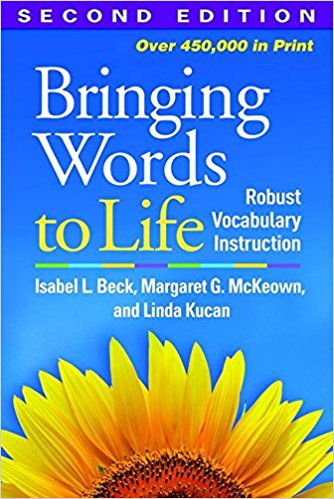 |
| A must-have vocabulary resource |
- Context
- Utility
- Support my ELLs. They need visuals!
- Support my struggling readers.
- Be engaging, fun, and offer appropriate pacing without a lot of kill and drill worksheets.
- Easy and practical for parents and teachers to use whether it was for home or school
- Span across a wide range of grade levels, since I work with kids in all grades.
- Not be too time consuming in an already jam packed school day or within a tutoring lesson.
The struggle is real. Did such a vocabulary program even exist?
I truly believe I have found it. Mrs. Wordsmith is a program created based on extensive research done from Cambridge University. Several months ago, I was scrolling through FB and saw a post on it and was instantly intrigued. Shortly after that, I contacted Eva from Mrs. Wordsmith and expressed my interest in trying it out.
- Early Years Journey ages 3-7
- Narrative Journey 7-10
- Persuasion Journey Ages 10-17
- Growth Mindset Journey- All ages (coming soon)
The Narrative kit teaches a set of 1,500 words with accompanying lists of word pairs (more on that later). Based on research conducted from Cambridge University, they believe children need to know 10,000 words by age 17 in order to become successful readers and writers. They’ve weeded out the words that are easy, the core words in everyday conversation and the ones that too technical or archaic.
So, if you are thinking of a tiered model for vocabulary instruction, these words would fall in tier 2. Tier 2 is the sweet spot for all you classroom teachers.
Just briefly, here is a background on the Three-Tier Framework of vocabulary instruction:
Tier One: Words are basic, highly frequent, easily recognizable and used in daily conversation. Very little, if any instructional time is spent on tier one words.
Tier Three: These words are the most technical, least conversational and are heard the most frequently in specific domains of learning. Since tier 3 words are so specific, and only utilized for specific topics, it makes sense not to devote as much instructional time here unless you are in the middle of a research project or unit of study in Science or Social Studies. For example, you rarely hear the word, paramecium in daily conversation unless you are working in microbiology or studying microorganisms in a science class.
Getting Started
I have the Narrative Journey Kit which contains 1,500 words and their accompanying word pairs are categorized into topics which blend very nicely with opportunities for writing. The categories are character, weather, taste and smell, action, emotion and settings. These words open the door to learn narrative writing.
Consider finding a space for a word wall or a large pocket chart if you choose to use this program. This can be your word of the day activity. Post the picture, discuss it at a morning meeting with thought provoking questions which spark conversation, complete the simple word web to discuss its word pairs and then reinforce it with the card decks.
Guess what? Mrs. Wordsmith Kits offer excellent opportunities to build morphological awareness.
Here are some ideas:
- Use the words to look for bases, roots, prefixes and suffixes. See what other related words you can think of when you study a new vocabulary word.
- For the word vacant, there are lots of related words like vacancy, vacate, vacation vaccine and vaccination. What is the connection between vaccinate and vacation? Take a word journey and find out.
- What a wonderful and manageable way to build in opportunities for spelling and grammar as well!
- Look at how adding suffix ion changes the meaning and part of speech in vacate to vacation.
- Look up the etymology of vacate in this online etymological dictionary To vacate comes from the Latin word, vacatus and the past participle, vacare which means to be empty or be void. Read more here.
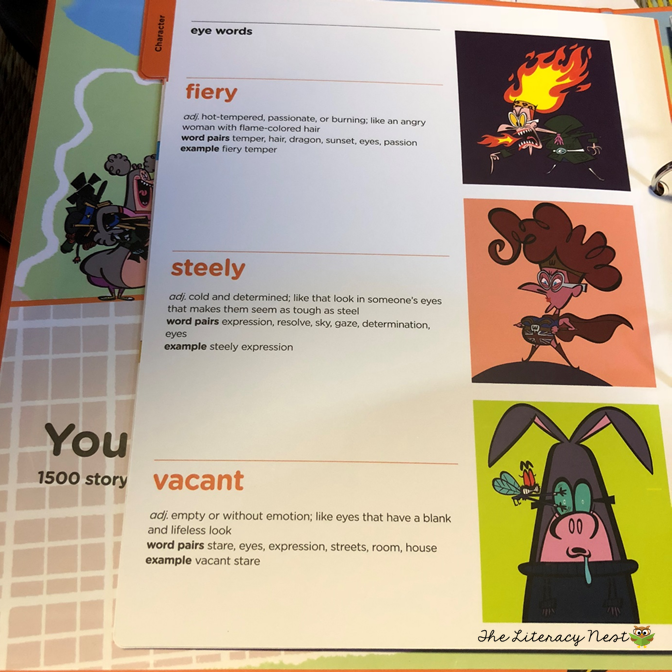 |
| Binder with all the words, pictures and definitions |
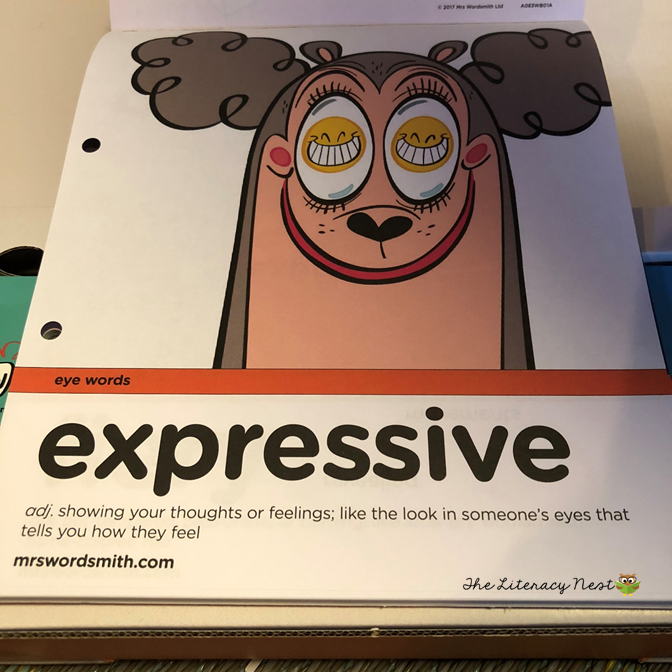 |
| Word Poster |
 |
| Word cards with word pairs on the back. |
Extend the learning by have your little word-smithers look for the new words in their reading, and to try and use them in their writing.
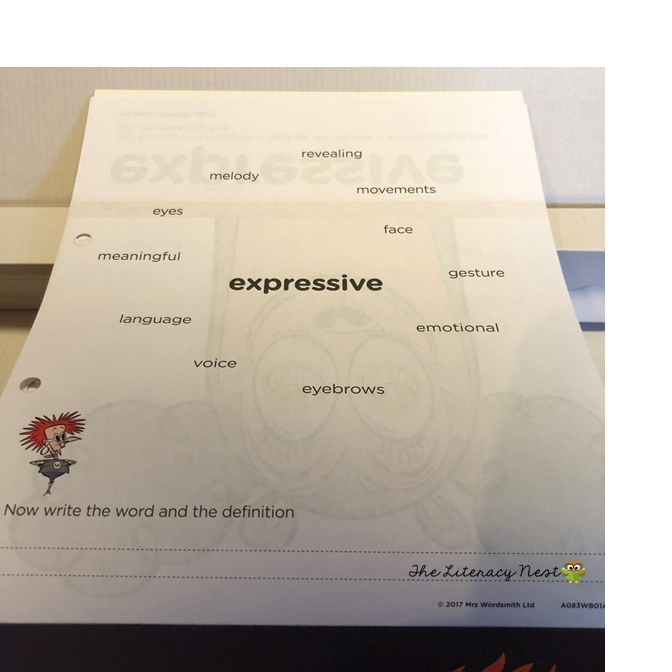 |
| Create word webs. |
There is a such a source of pride and accomplishment when you see a child truly showing ownership over a word they’ve found, is able to talk about it and even use it in their own writing.
What are word pairs?
Word pairs or collocates, are words that often appear together in text or found together. Finding pairs of words helps to put the words in context. You can help children beyond just providing a definition. They will find examples with word pairs and see how the words are used.
Learning word pairs will help build utility. For example, the word pairs with bulging are: eyes, veins, wallet, belly, bicep, and suitcase. Using the word pairs, you open up discussion of the word bulging. If all those words in the list are things that can be bulging, what could the word, bulging mean? Try and construct meaning together. Then ask, “What is something else that could be bulging?
Create sentences together with the word bulging and its word pair in it. Mrs. Wordsmith includes a fun card game with a point system for guessing word pairs. It reminds me a bit of the game, Apples to Apples.
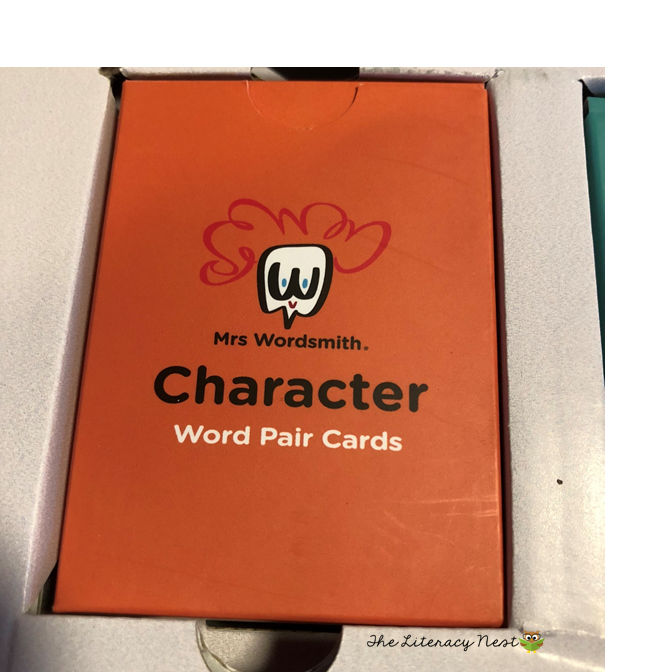 |
| Word pair decks |
As you know, I rarely advertise many outside products on my blog. I only select high quality resources that I myself would use with my own children or students.
I was so excited to share this one with you, that I knew you wouldn’t be disappointed. Eva from Mrs. Wordsmith is GENEROUSLY giving all of my readers a SPECIAL DISCOUNT if you want to purchase Mrs. Wordsmith for your classroom or your home. This may not be a program you want to dive into late in the school year, however, if you buy it for the new school year budget and get it ready for August/September, you can hit the ground running and have budding word smithers in no time.
Here are the instructions for $45 off your purchase until the end of April 2018.
When you go to order your Mrs. Wordsmith kit(s) from https://www.mrswordsmith.com/ enter the code: LiteracyNest45 for $45 off.
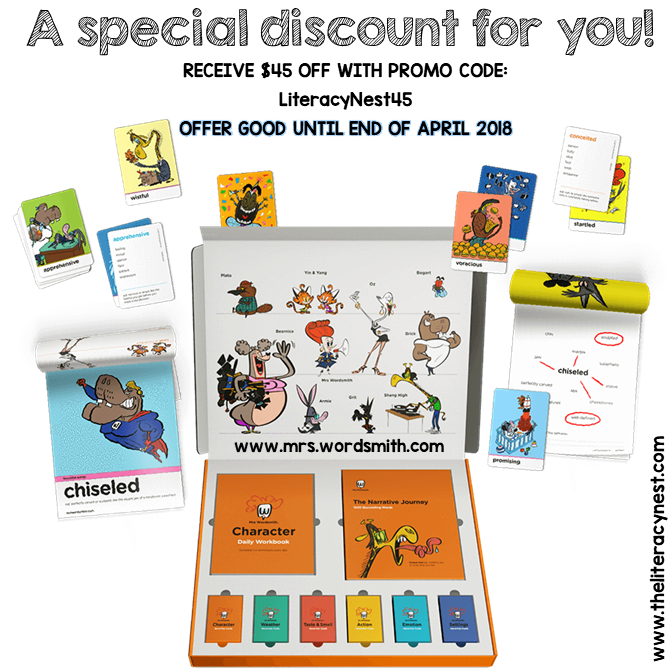 |
| Offer good until April 2018. Go here to order. |
Does Mrs. Wordsmith sound like a program you’d be interested in giving a try? I’d love to hear about it, so let me know in the comments. You may explore and order a vocabulary kit with this Mrs. Wordsmith link or look for this symbol in the right sidebar.
 |
| Mrs. Wordsmith Vocabulary Kits |
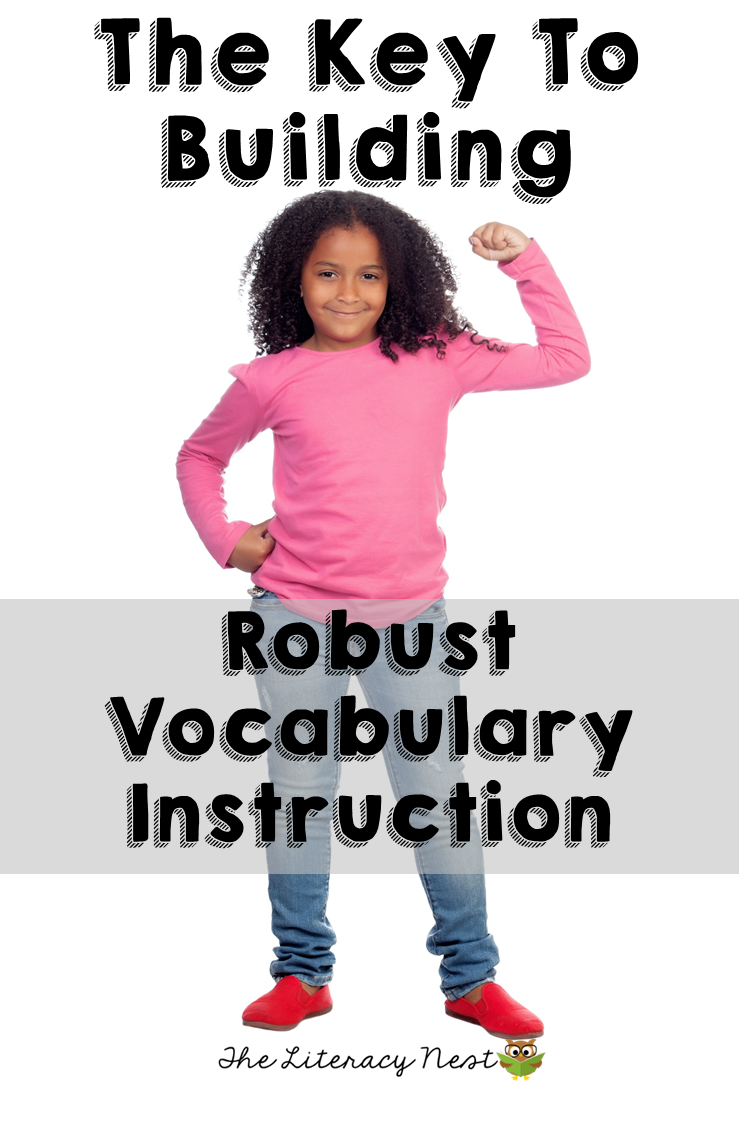 |
| Pin me! |
Thank you for stopping by my blog today!

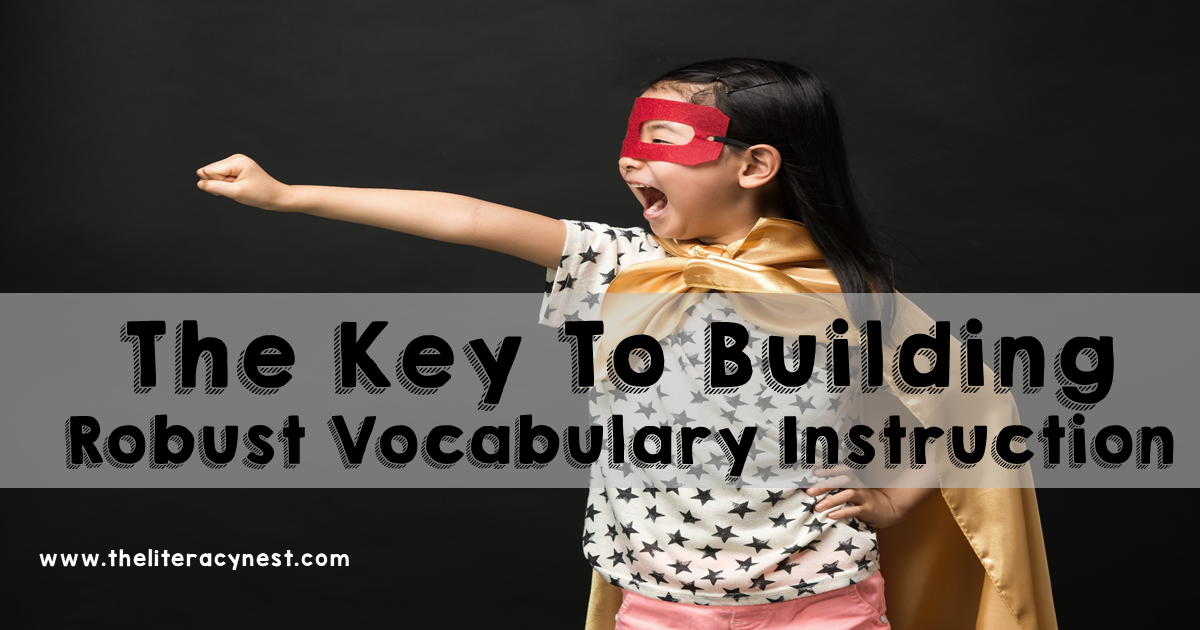

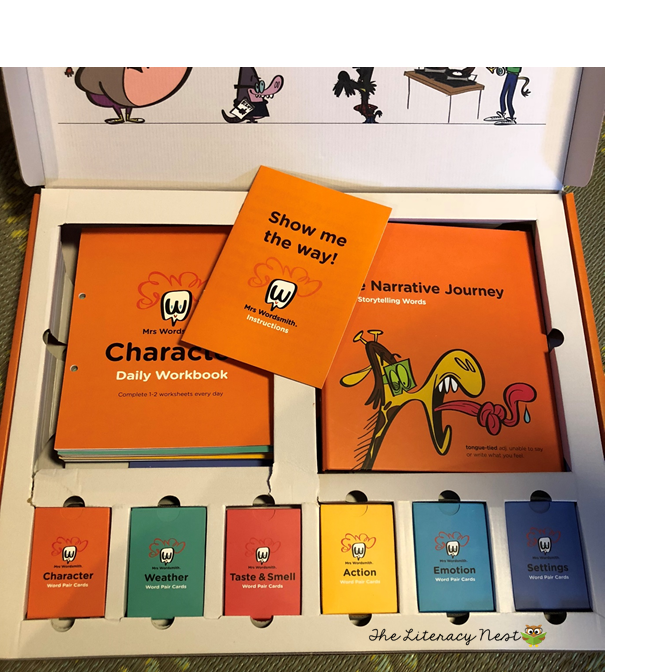

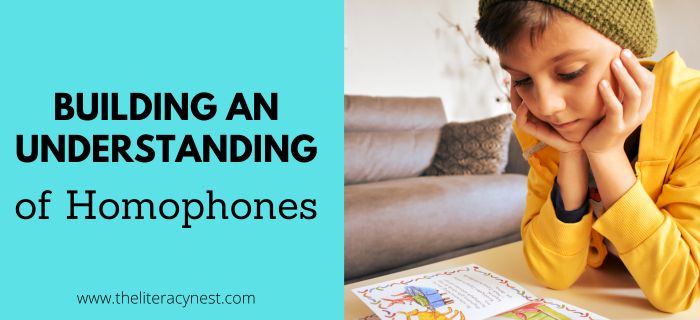
Hi thanks for the review. Just wanted to say that the voucher works for UK too: 30 pounds off. Thanks for sharing g!!!